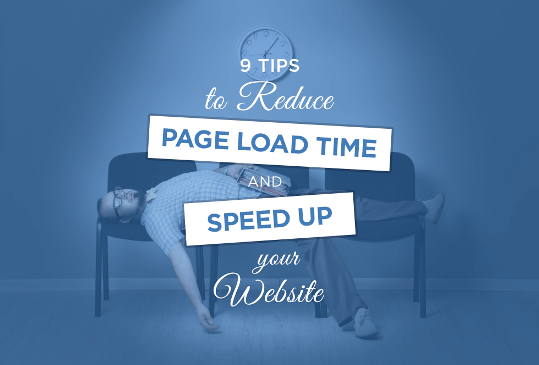With the launch of Google’s AMP project, the debate over web page loading time seems to have acquired a new ground altogether. Everyone seems to be in a maddening frenzy to optimize their site and reduce page load time.
But why should care about it?
Because page load time decides whether a visitor to your site will explore further or part their ways. In fact, more than 83% visitors expect a web page to load in 3 seconds or less and more than 40% visitors abandon a web page if it takes more than 3 seconds to load.
In addition to losing out on page views and traffic, your ROI and conversions also go for a toss if page doesn’t render well. Don’t take our word for it, check out these stats:
- A 1 second delay in load time leads to 11% fewer page views, 16% decrease in customer satisfaction and 7% loss in conversions.
- 79% shoppers who have trouble with web site performance say they won’t return to the site to buy again.
- 44% of visitors will develop a negative image of the company if the site crashes or the load time is poor.
- If an e-commerce site is making $100,000 per day, a 1 second page delay could potentially cost $2.5 million lost in sales every year.
- Conversion rate increases 74% when page load time improves from 8 to 2 seconds.
But is it just your ROI and overall conversion that’s affected by a slow loading web page?
NO!
A slower page load time also hampers the SEO, User experience and brand image of your business. Check out the stats that reveal the same.
- 46% visitors who failed to get through the site due to loading times are expected to tell the friends about the same.
- 44% of visitors will develop a negative image of the company if the site crashes or the load time is poor.
- Site speed is an important factor that Google uses to determine search rankings, both on desktop and on mobile.
- According to Google, page speed is a key element of your landing page experience and has a great impact on your AdWord Quality Score.
Given these stats, it wouldn’t be an exaggeration to say that even a few seconds delay in the page load time results in the loss of substantial traffic and potential sales. And this loss is amplified several times over if don’t you’ve not been concerned about your mobile site’s speed.
Remember, faster page load time not only makes your users happy, it decreases your bounce rate, and improves your conversions manifold.
But how would you decrease your page loading time?
Download the Printable Version of this Infographic to Decrease Your Page Load Time NOW!
Almost there! Please complete this form and click the button below to gain instant access.
Contents
Enter your details to get to know about 9 Tricks that would Instantly Decrease Your Page Load Time
We hate SPAM and promise to keep your email safe.
Thank you for downloading.
How to Reduce Page Load Time and Speed Up Your Website? – Infographic’s Data
Here are 10 simple steps to help you shave off a few seconds from your site’s loading time.
Optimize Caches improve Page Load Time
- Ensure that your mobile browser uses local memory to cache resources in order to avoid unnecessary server requests.
Trim Down JavaScript Parsing to achieve Ideal Page Load Time
- Parsing of JavaScript by mobile browsers increase the page load time. Optimize the page load time of your mobile site by deferring the parsing of unnecessary <script> tags.
Do Away with Redirects and Improve Website Speed
- Redirects usually require extra processing time. Serve the mobile site to the users directly.
Minify JavaScript & Style Sheets to Speed Up your Website
- Minification is the process of removing all unnecessary characters from source code without changing its functionality.
- Minify all JavaScript and style sheet on your mobile site to reduce the overall bandwidth consumption and improve mobile caching.
Apply CSS3 and HTML5 to Improve Page Load Time
- CSS3 and HTML 5 framework are lightweight and make it easier for mobile web pages to load quickly.
- CSS3 has features including rounded corners, animations and text/box shadow, which makes it one of the most preferred choices for many.
Minimize Image Size to Reduce Average Page Load Time
- It makes sense to optimize and resize images to ensure quick loading time. Remember, high resolution images are heavy and usually absorb more bandwidth and take longer to process.
- Keep images under 100kb to achieve the ideal page load time for your site.
Apply AJAX to Speed Up your Website
- Applying AJAX will help your mobile site fetch the data from a web server without essentially requiring the page to be refreshed.
- It allows your mobile site to quickly load and fill in updated content while the viewer is still browsing through your mobile page.
Use Content Delivery Network to Improve Average Page Load Time
- Webopedia explains that Content Delivery Network is a system of distributed servers (network) that deliver webpages and other Web content to a user based on the geographic locations of the user.
- You may use a Content Delivery Network (CDN) such as Amazon Cloudfront to reduce the page load time. Access to a faster server near your user’s geographical location ensures faster loading time for your mobile site.




